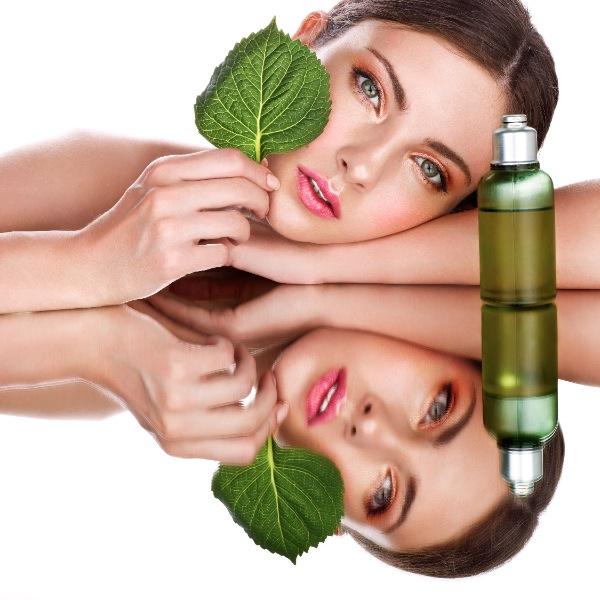They promise no less than youth-in-a-bottle, nature’s own concentrated bounty delivered to your face, blasting away everything from sun spots to wrinkles.
It all comes at a price and in a pretty bottle, but how and why do serums work? And why do we suddenly have to use a serum under our moisturizer? Are serums a gimmick thought up by the beauty industry to further entice us to buy that which we don’t need?
These are some of the questions that came to mind as I embarked on my quest for an effective face elixir in the form of a serum.
Creams and ointments have been around since antiquity. Animal fats and plant oils (such as castor oil and olive oil and argan oil among many others) have been used to alleviate dryness of the skin and each culture has its own natural unguents. But serums are more of a modern advent.
Serums are usually fluid as opposed to face creams, and despite the fact that face creams are also called moisturizers, it seems that serums are supposed to moisturize more effectively.
If this seems rather confusing, it’s nothing compared to the information pertaining to the ingredients that serums contain, should any consumer venture past the name on the label to try to decipher just what exactly they are buying. Serums usually tout having active ingredients like vitamins and antioxidants that are formulated with smaller molecules to penetrate into the skin’s deeper layers.
To solve the serum ingredient puzzle, I enlisted the help of New York City dermatologist Dr. Ariel Ostad, who is a board-certified dermatologist and cosmetic dermatologic surgeon, as well as assistant professor and writer, to help clarify some facts.
Do They Work?
I started by asking him a simple question: Do serums really work?
“Serums definitely work. They are hydrating, and they allow nice penetration and absorption of the ingredients that are contained in them into the membrane of the skin—the skin has a lipid (fatty) membrane,” said Dr. Ostad, adding that “the serum has the ability to get through the outer layer of the skin and into the cells.”
According to Dr. Ostad, serums are a great way to hydrate the skin and allow the collagen layer to stay healthy. The fact that ingredients are effectively absorbed into the skin leads to “better results.”
This is key, because as much as we like to have healthy skin, we also want it to be clearly, visibly so.
Serums often target various skin conditions such as dehydration, wrinkles, lack of firmness, and dark spots among others. And they are also targeted to specific skin types.
Serums become important for somebody who has oily skin and cannot tolerate a cream moisturizer, because it’s going to make them break out, according to Dr. Ostad, and some serum ingredients cannot be made in cream form. He also mentions that creams or lotions are usually great for people with normal to dry skin.
What’s Hydrophilic?
Dr. Ostad mentions that some beneficial ingredients such as those found in serums are hydrophilic (water soluble), while the same ingredients are not soluble in a heavy cream moisturizer, which explains why a serum has added benefits that a cream lacks.
So serums are a “middle of the road product” that contain dissolved antioxidants and that don’t cause skin breakouts or clog pores.
Like most women, I have experimented with my fair share of face products and amassed a collection of duds as well as ones worthy of repurchase. Never one to accept defeat, I have, since my teenage years, applied even the greasiest of ointments on a damp face so as to not throw them away. I have noticed that this instantly helps to improve with absorption and the water allows less cream to be spread further, faster.
I timidly asked Dr. Ostad if doing this is a good idea. The answer was an unequivocal “yes, that’s a great idea,” and he went on to say that applying serum or cream on a damp or wet face is a great idea in improving its absorption. The optimum time to do this is within a minute of having a shower or bath, when the pores are open and clean.
So it helps to know your own skin, and you can only do that by simple observation.
The same cannot be said of those unpronounceable and supposedly beneficial ingredients that serums contain.
Deciphering Some Common Ingredients
Once you’ve researched what might be best for your own skin type and decided what you want to target, you might wish to know just what exactly you’re putting onto your skin.
In the spirit of making life easier, I asked Dr. Ostad for his expert opinion on the qualities and effectiveness of some common ingredients found in both high- and low-end products.
Here is the list and Dr. Ostad’s verdict on each one:
Alpha hydroxy acids (AHAs) are glycolic acid from sugar cane, lactic acid from sour milk, malic acid from apples, citric acid from citrus fruits, and tartaric acid from grape wine. In low concentrations they chemically exfoliate the skin and improve its texture.
Matrixyl 3000 is supposed to boost collagen production, and it seems to do that but doesn’t consistently work for everyone.
Retinol (vitamin A) is effective in terms of stimulating collagen and removing the outer layer of the skin.
Copper peptides are amazing for collagen synthesis and for rejuvenating the skin.
Growth factors from discarded human parts, such as discarded human foreskin, can be used to develop a culture from which to harvest growth factors. These have been shown to help to stimulate collagen growth.
Hyaluronic acid effectively lubricates and cushions, helps to produce more collagen, and improves the skin’s firmness and tone.
Resveratrol is an effective antioxidant found in wine and fruit, but it has to be stable to maintain its potency.
Ubiquinone (coenzyme Q10) must be highly concentrated, stable, and alive so as to not lose its potency; it is an effective antioxidant.
Bee venom should be avoided. It has never been shown to do anything and can lead to allergic reactions. There are other, more effective ingredients.
Camellia sinensis (green tea) extract is an amazing ingredient. It has polyphenols that are free radical scavengers; as an antioxidant it helps to preserve and stimulate collagen growth.
Magnesium ascorbyl phosphate (stabilized vitamin C) has significant antioxidant properties, but must be stabilized.
Ferulic acid (iron) is an amazing antioxidant that helps stimulate collagen growth.
Ceramide 3 (a skin-repairing ingredient) is an amazing ingredient in terms of really hydrating the skin. It makes the skin’s cells stick together and helps maintain hydration.
Tocotrienols and tocopherols (vitamin E) have the ability to protect the skin from free-radical damage, for example, sunlight and ultraviolet exposure.
Niacinamide (vitamin B3) has an incredible ability to hydrate the skin, and it gives energy to the mitochondria (the powerhouse of cells) in the skin to stimulate cell turnover, so it’s great for reducing brown spots on the face. It also improves skin-barrier function.
Silicones (dimethicone and other chemical compounds that end in “cone”) are inert molecules that impart emollient (silky, slippery feel) qualities and may also stabilize the product.
Best Ingredients Per Age Group
20s–30s: ceramides, niacinamide, vitamin C
30s–40s: retinol, hyaluronic acid, AHAs
40s–50s: retinol, all antioxidants (copper peptides, ferulic acid, growth factor)





